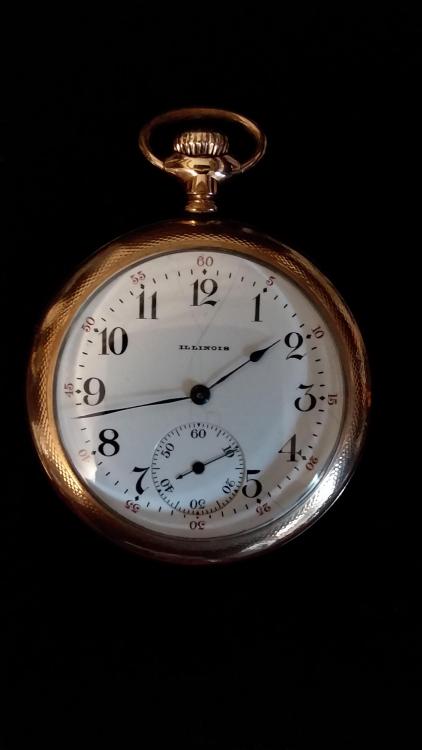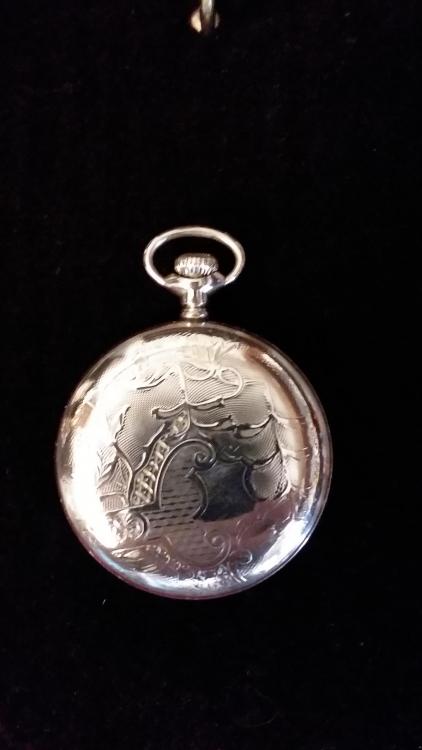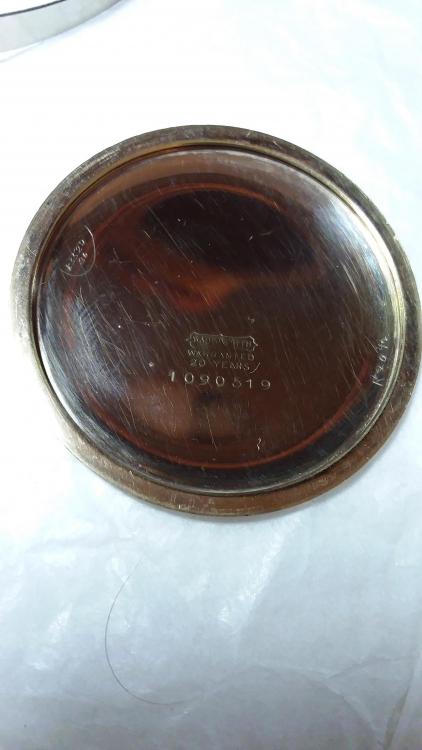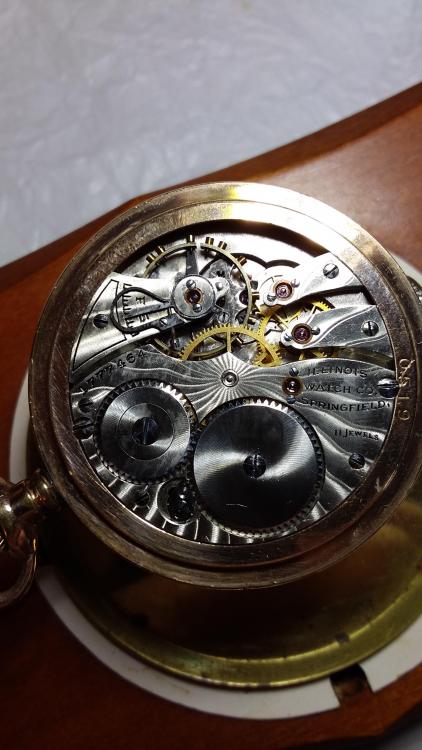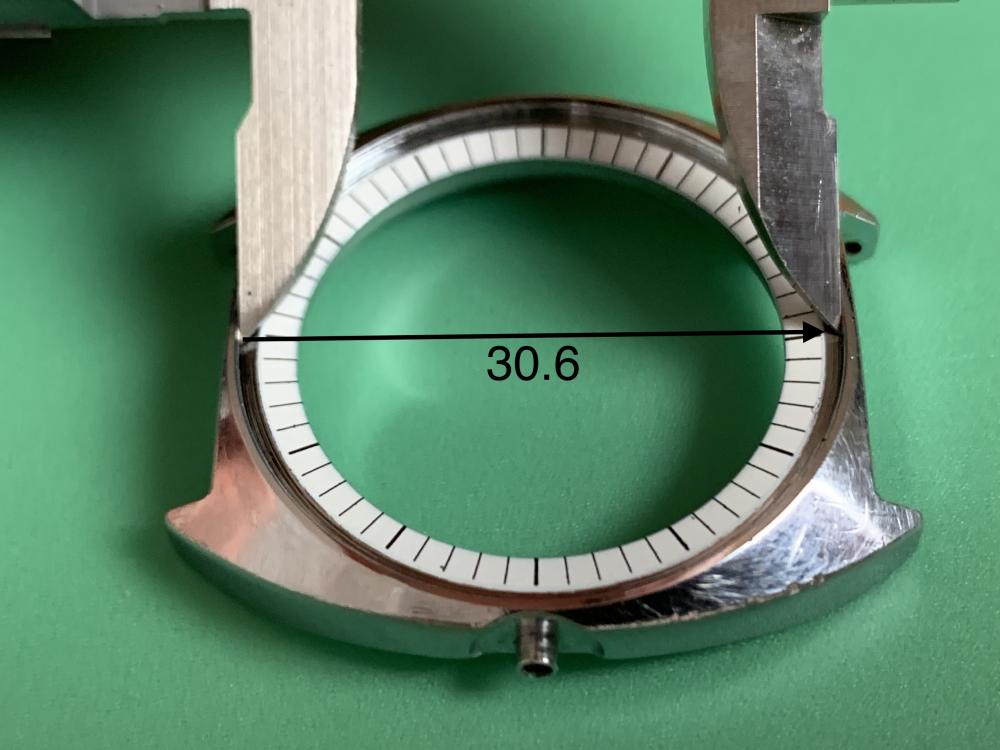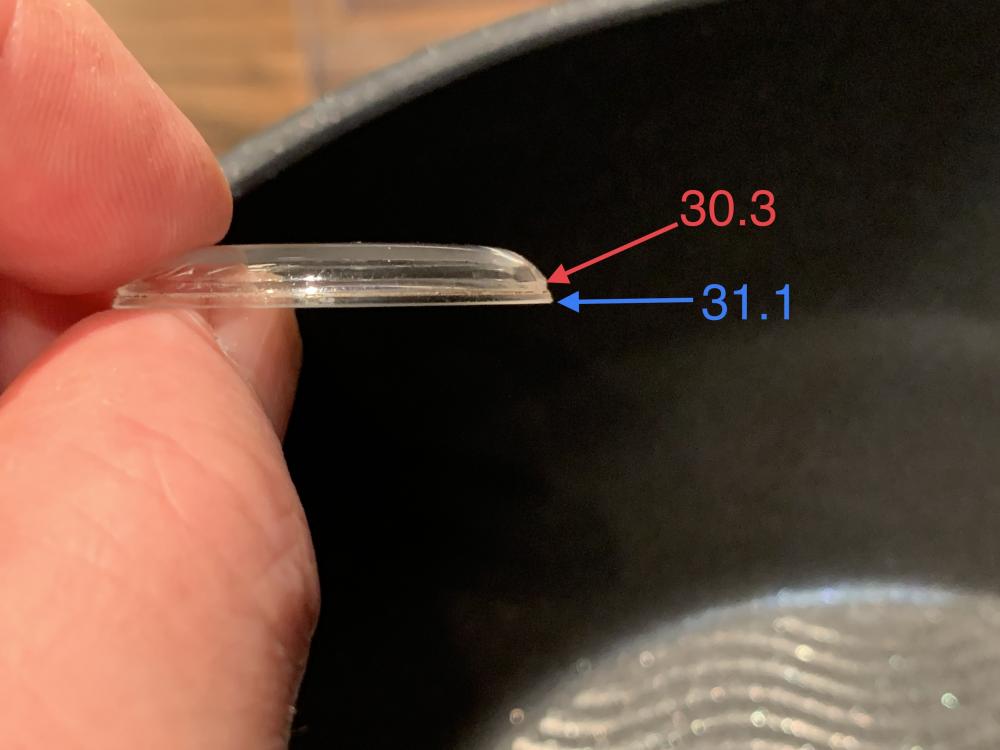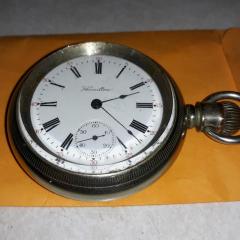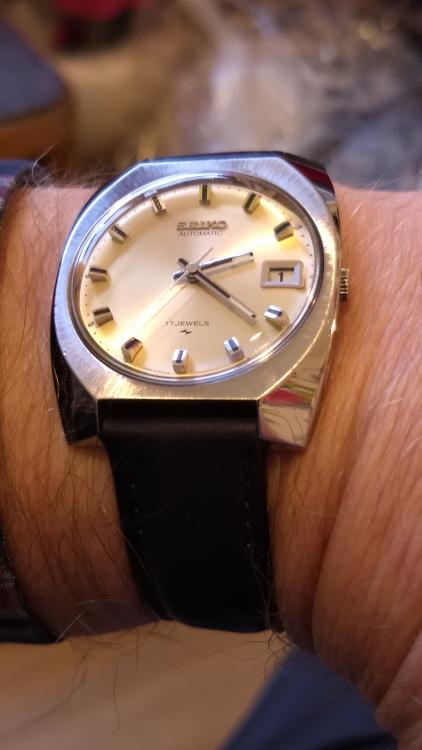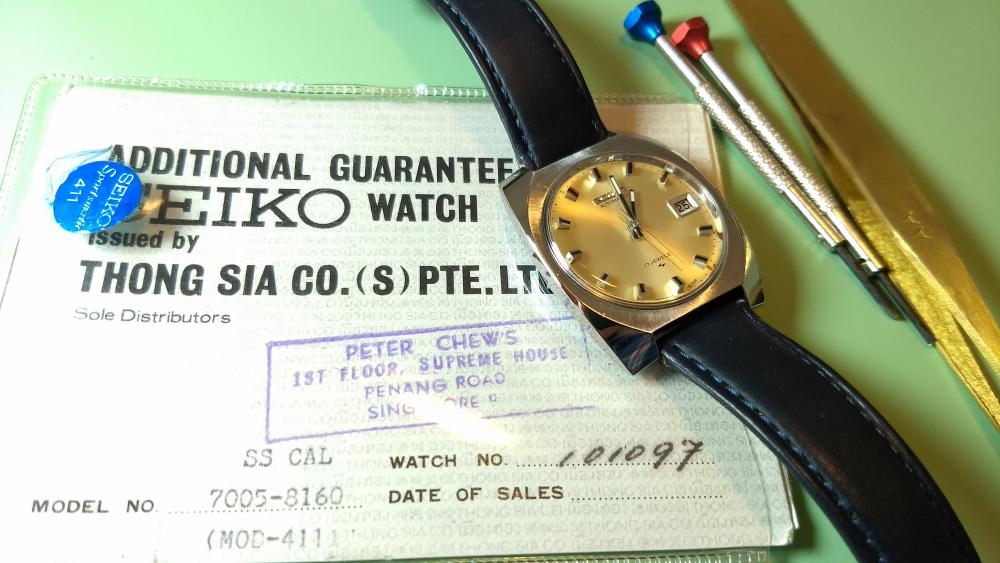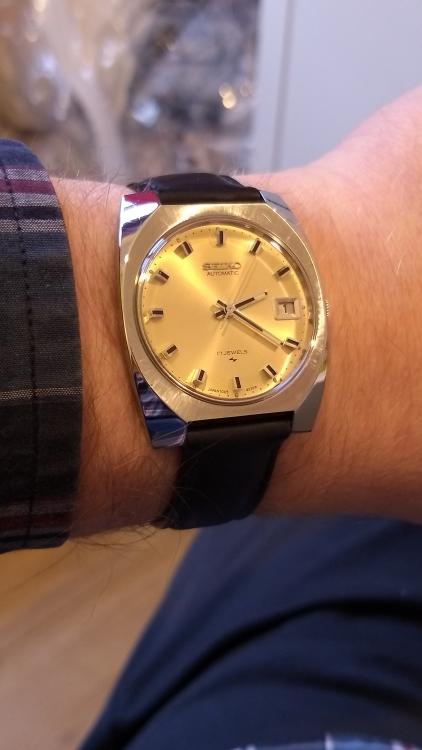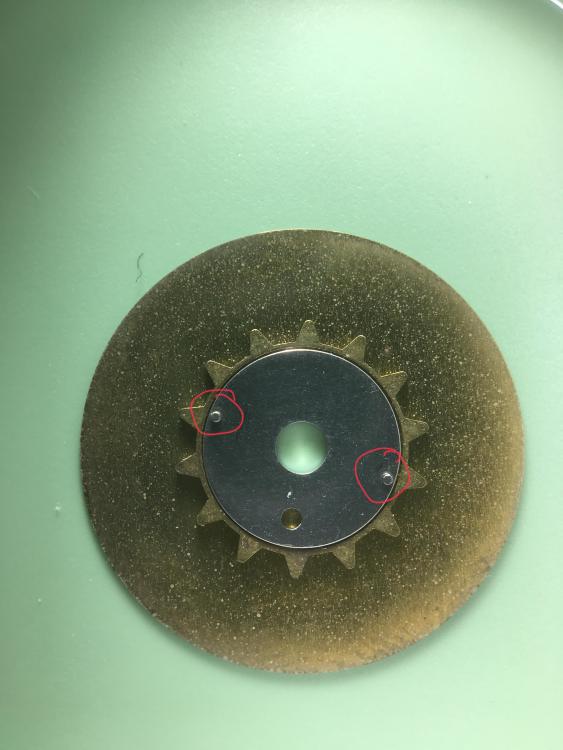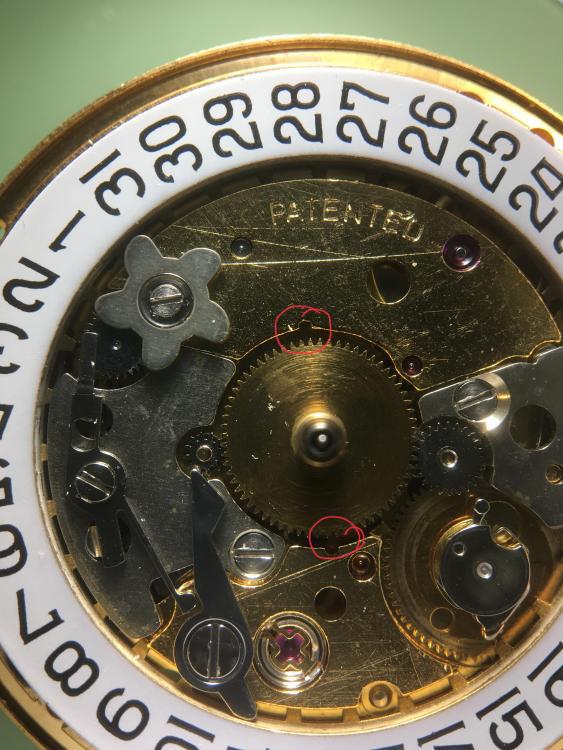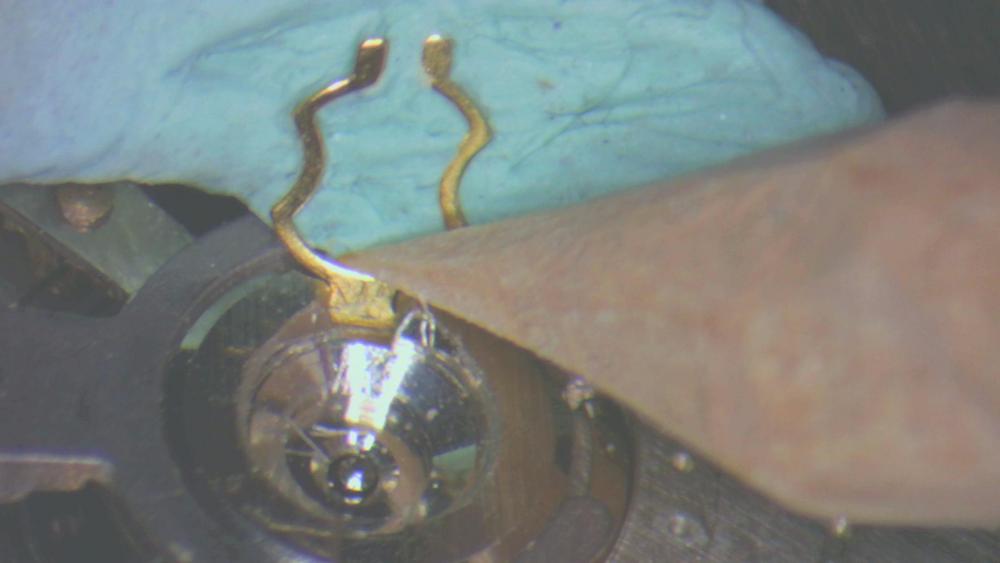Leaderboard
Popular Content
Showing content with the highest reputation on 01/02/21 in all areas
-
The second in the series of 5 watch services that I'm doing for my brother: an Illinois Model #1, circa 1905. I decided to get this one done while I wait for parts shipment for the NY Standard. These are the details on the Illinois: Serial #1777464, Grade 219, Model 1. Open face, screw back, screw bezel, crown wind & set. Wadsworth gold-filled case, warranted 20 years, serial #1090519 Nickel finish damaskeened movement, size 12s. Anchor lever, compensating balance with micro-metric on regulator index. Going barrel, 3/4 plate, unadjusted. This pretty pocket watch needed only the basic pentenniel service of strip & clean, oil & grease, and regulation. The case has a couple dings and the porcelain dial has a couple mild hairlines, but nothing so great that it robs from its aesthetic. Indeed, I think it possesses an appropriate patina for its age. Nevertheless, I cleaned the dial and polished the case, and I think it looks great now. And seems to be running strong. This was light work compared to what I face with a couple of my brother's other watches. And again, look how pretty this movement is! My word, I wish they still decorated mechanisms like that! And it regulated to within 7 to 8 seconds average in all positions. That micrometric regulator is a godsend. I've always liked those.3 points
-
You should always spend time in cleaning any watch case after cleaning the movement, if the glass needs replacing then do it the same with wrist watches lugs might need to be replaced the same with the button if its smooth and hard to wind replace it. No point putting a nice clean movement back into a dirty case.2 points
-
1 point
-
Thanks - I’d been looking at that page. Case aperture diameter : 30.6 Crystal diameter (vertical part of profile) : 30.3 Crystal diameter (flare/step?) : 31.1 Assuming the correct reference size for this crystal is 30.3mm? In which case, better to keep shopping, or would you expect a 30.4mm to be a workable option (evens only from this page at Cousins)? Thanks - Rory1 point
-
I started to ask when Chinese New Year was, because it bit me in the butt last year on a business deal. It combined with China shutting down for coronavirus, then we got shut down. Never did find a gap before the opportunity was gone... I had some time last night, so I went through the entire ocasde site and looked at everything "microscope". They also have another brand that google tells me is a very similar level, but maybe slightly less versatile (less accessory choices). I forget the name, but it might have started with an O. I also went through AmScope's site and looked the other way. I didn't find anything new, but figured out more or less what you're saying about only really having a few models, and just blowing out a catalog with accessory combinations. I haven't completely figured out how the lineup works in terms of where the core is, and how the part numbers work such that I could "build" a microscope how I wanted in those terms though. If the $99 scope turns out to be real (all of my fingers and toes are crossed), I'll probably buy a couple (maybe more than a couple). I'll get one for me, and one for the higher magnification stuff. At that price, it's a bit silly not to. It may also make sense to buy a few in the event they turn out to be factory seconds or something similar; swap parts around between them to get a good one, sell off the double second.1 point
-
See link below it looks like most Timex watches have either have 51 or 52 degree lift angle. http://relojesdetorre.weebly.com/uploads/1/0/1/3/10134874/tabla_de_angulo_de_elevacion_4.0.xlsx ps there is strange Timegrapher reading that I have not seen before. By any chance is the hairspring magnetised pps adjusting the lift angle will make very little difference to the amplitude readings.1 point
-
It's surprisingly easy: - note initial position prior to disassembly - place the regulator in the same position before having it installed - if further adjustments are required - use a pegwood stick or a pair of tweezers to slightly push the regulator to the left side to release pressure from the screw and hold it while rotating the screw with another pair of tweezers to desired direction Those regulating screws are extremely easy to rotate with tweezers. If this is too hard for some people then remove top screw, lift the regulator spring, using a screwdriver make adjustments, reinstall using screwdriver and tweezers. It takes just a few seconds. Not the best design, but no major headache.1 point
-
Hi all. Many thanks for your assistance and educating me on something I didn’t fully understand. The overbanking theory I think was correct as I have changed the pallet fork and now it appears that the impulse jewel does not get on the wrong side. Many thanks for all of the advice it was very much appreciated.1 point
-
1 point
-
@spectre6000, sounds like he has the same kind of AmScope stand I have. It's more expensive than the single boom and non-boom stands, but I think it's worth it. @Tudor, I do exactly as you describe, and move the scope out of the way when I don't want to use it. The boom rotates freely, unless you lock it with a knob. There is another locking ring under the boom on the vertical shaft that controls height. The boom slides back and forth on a linear bearing too. The head has multiple degrees of freedom, for tilt, rotation, additional height, etc. Changing the objective lenses is something that is done for compound microscopes. These are the kind used for looking at slides a millimeter from the lense, with one eye, at 1000X+ power. Totally wrong kind of microscope. For a stereo microscope the objective isn't swappable. It's either fixed or has some zoom range, like 0.7x to 4.5x. Multiply the base magnification of the objective by the eyepieces to get the total. This is how a 0.7-4.5 zoom (like the AmScope models) becomes a 7x to 45x when combined with 10x eyepieces. Eyepieces are semi-interchangeable. There are different sizes and types, some more standard than others. For a stereo microscope you want widefield eyepieces. They will say often say "WF". Non-widefield are for compound microscopes. Totally wrong. Then you have the size, or diameter where it fits into the eyepiece tubes in the scope body. The AmScope uses 30mm eyepieces, which seems to be the most common size. Eyepieces can also be high eyepoint or low eyepoint. This is how far your eye should be from the eyepiece to get the correct focus. High eyepoint lets you wear glasses (which you should do if you wear glasses). They will often have an eyeglass icon on them. Everything seems to be high eyepoint for stereo microscopes. Then you've got a choice of magnification and there is 5x to 30x is available. 10x is standard. Since the microscope objective doesn't get bigger, using higher magnification eyepieces is like camera digital zoom: it makes the picture bigger but doesn't add new pixels. They also need more light and just seem to be more fiddly. Less of sweet spot to get your eyes and more fiddly with focus. Given that, there are a thousand compatible eyepieces for sale on amazon, ebay, aliexpress, amscope's site, etc. Now, for working distance. All of AmScope's zoom stereo microscopes have the same working basic distance! And the Zeiss, Fuji, etc. are nearly the same too. It's not an arbitrary value to designer can choose at will, but is based on the objective magnification. So you've got no choice really. But wait you say, "AmScope's different models clearly have different working distances in the specs! That's got to be wrong!" What's going on here is a Barlow lens. This is large lens that screws onto the front of the objective. The AmScopes use a 48mm thread and you can buy them from many places. These change the magnification, choices are 0.5x, 0.7x (i.e., less magnification), 1.5x, and 2x. The lenses that decrease the magnification also increase the working distance. A 0.5x lens will cut the magnification in half while doubling the working distance, while the 2x does the opposite. You want a 0.7x and/or a 0.5x for watch work if you want to do more than look at things or maybe use an oiler. The AmScope kits with the larger working distance just include a 0.5 or 0.7 Barlow lens. You can buy the same lens separately. In fact, AmScope really has just one normal stereo binocular microscope. Then there are 300 different kit combinations of that scope with different stands, eyepiece(s), barlow lens(es), lights, cameras, and so on. BTW, the kit prices are strange. Some are a much better deal than others.1 point
-
1 point
-
1 point
-
1 point
-
1 point
-
Hi As a further aid to terminology and understanding see the attached documents for your perusal cheers. TZIllustratedGlossary.pdf Witschi Training Course.pdf1 point
-
I have a link to a video that explains what the problem could be. Then when you're watching the video he shows explains basically a test which you're supposed to be doing on all your watches to verify the safety features are working. But typically on wristwatches no one ever does this because typically they work. When you look at the video typically when all the safety features are in place that should never happen. If they guard pin is not functioning and you receive an external influence like a bump the pallet fork will move. In setting the watch it's possible to put enough pressure on the gear train stop to gear train which would allow the pallet fork to free float and move. Of course this is not a setting problem this is a safety problem. It would be nice to see a picture of your pallet fork because looking at the parts list I can guess on something. Another thing that can happen to the guard pin on older watches are the guard pin is adjustable. They even make a tool so you can push it in and out as it's a separate round pin. It's possible that it has relocated to someplace it's not supposed to be. It would be really nice to have a picture of the balance wheel out of the watch and the pallet fork still in the watch but a good picture the pallet fork aimed at the guard pin area as that's more than likely were your problem is. https://youtu.be/DxeM85XRTbU1 point
-
Definitely not a common fault. What you seem to be describing is called "overbanking" or "out of action". One possible cause is a bent guard finger. Another is an out of place safety roller. Yet another is worn balance- or pallet-jewels (or worn or bent pivots) which affect the interaction between finger and roller. What is puzzling is why the problem only occurs when you are setting the time, and why the watch otherwise funtions OK.1 point
-
1 point
-
1 point
-
1 point
-
0 points




